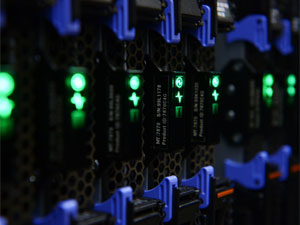



Date:23/09/17
 According to research from Business Insider, more than 24 billion internet-connected devices will be installed around the world by 2020. To give that some context, that’s more than four devices for every person on the planet. Together, these devices comprise the Internet of Things (IoT), and its presence is permanently changing our world.
According to research from Business Insider, more than 24 billion internet-connected devices will be installed around the world by 2020. To give that some context, that’s more than four devices for every person on the planet. Together, these devices comprise the Internet of Things (IoT), and its presence is permanently changing our world.
IoT is the connection between the physical world of humans and the digital world of data (and, to some extent, human ideas). Computers, smartphones, smartwatches, tablets, modern TVs, and wearables are all part of the IoTs — that part is intuitive. However, even everyday appliances like thermostats and smoke detectors are now beginning to boast smart capabilities, which establishes them as part of the IoT. Our entire transportation system, the way we work, and even how we socialize will all change because of the IoT.
Although there are many things that together are driving the growth of the IoT, there are a few basic trends that are easy to identify. Internet connectivity is expanding and will soon be almost everywhere. For example, in 2018 New York is set become the first state to bring broadband access to every household, even in rural areas. Another factor is that mobile technology is improving quickly, and the use of remote and mobile devices is rapidly becoming more widespread. This means prices are falling, and access is growing. Nokia, for example, is bringing 5G technology to India.
Along these lines, more money is being invested into the IoT as companies and governments alike recognize its importance. The U.S. government invested $8.8 billion in IoT solutions in 2015, up $1.1 from the previous year. At the same time, the price of internet-connected sensors, which most IoT devices rely on, is falling. This means the price of IoT devices are dropping, and more people can afford more devices.
As the IoT grows, security challenges will arise, and possible privacy concerns that could affect our individual rights. However, overall the growth of the IoT will mean more access to opportunity for more people. The best way to respond to it is to plan ahead for these kinds of problems and be ready to tackle them.
By 2020, There Will Be 4 Devices for Every Human on Earth
 According to research from Business Insider, more than 24 billion internet-connected devices will be installed around the world by 2020. To give that some context, that’s more than four devices for every person on the planet. Together, these devices comprise the Internet of Things (IoT), and its presence is permanently changing our world.
According to research from Business Insider, more than 24 billion internet-connected devices will be installed around the world by 2020. To give that some context, that’s more than four devices for every person on the planet. Together, these devices comprise the Internet of Things (IoT), and its presence is permanently changing our world.IoT is the connection between the physical world of humans and the digital world of data (and, to some extent, human ideas). Computers, smartphones, smartwatches, tablets, modern TVs, and wearables are all part of the IoTs — that part is intuitive. However, even everyday appliances like thermostats and smoke detectors are now beginning to boast smart capabilities, which establishes them as part of the IoT. Our entire transportation system, the way we work, and even how we socialize will all change because of the IoT.
Although there are many things that together are driving the growth of the IoT, there are a few basic trends that are easy to identify. Internet connectivity is expanding and will soon be almost everywhere. For example, in 2018 New York is set become the first state to bring broadband access to every household, even in rural areas. Another factor is that mobile technology is improving quickly, and the use of remote and mobile devices is rapidly becoming more widespread. This means prices are falling, and access is growing. Nokia, for example, is bringing 5G technology to India.
Along these lines, more money is being invested into the IoT as companies and governments alike recognize its importance. The U.S. government invested $8.8 billion in IoT solutions in 2015, up $1.1 from the previous year. At the same time, the price of internet-connected sensors, which most IoT devices rely on, is falling. This means the price of IoT devices are dropping, and more people can afford more devices.
As the IoT grows, security challenges will arise, and possible privacy concerns that could affect our individual rights. However, overall the growth of the IoT will mean more access to opportunity for more people. The best way to respond to it is to plan ahead for these kinds of problems and be ready to tackle them.
Views: 479
©ictnews.az. All rights reserved.Similar news
- 24% of U.S. Adults have made phone calls on the Internet
- UNESCO puts sustainable learning online
- Australia gives incentives for the use of telehealth
- US launches computer programme for poor kids
- UN declares web access as human right
- Facebook growth slows in stalkerbase heartlands
- One Third of Millionaires Use Social Media
- Facebook Seeks Bigger Role in Software for Mobile Apps
- Icann increases web domain suffixes
- IBM launches new social networking platform for enterprises
- Google Notches One Billion Unique Visitors Per Month
- Internet providers cut international channel renting costs by 60%
- Azerbaijan launches standard time on internet
- Icann launches facility to ease DNSSec adoption
- Social network data mining yields worrying results for traditional media





















